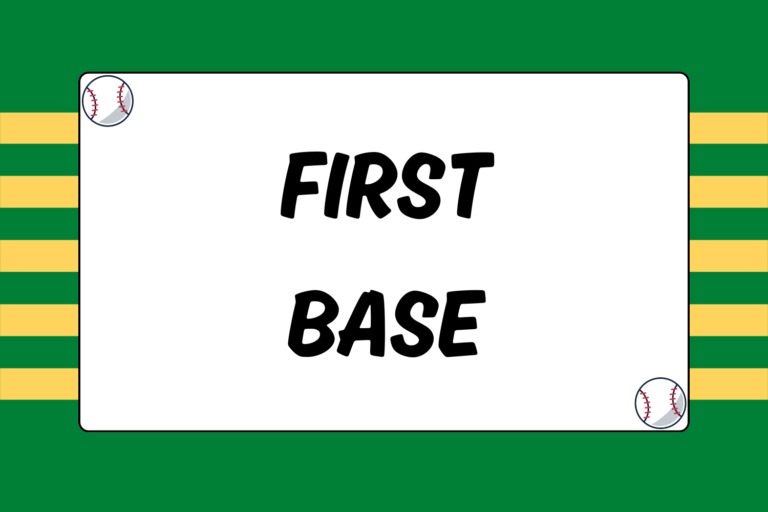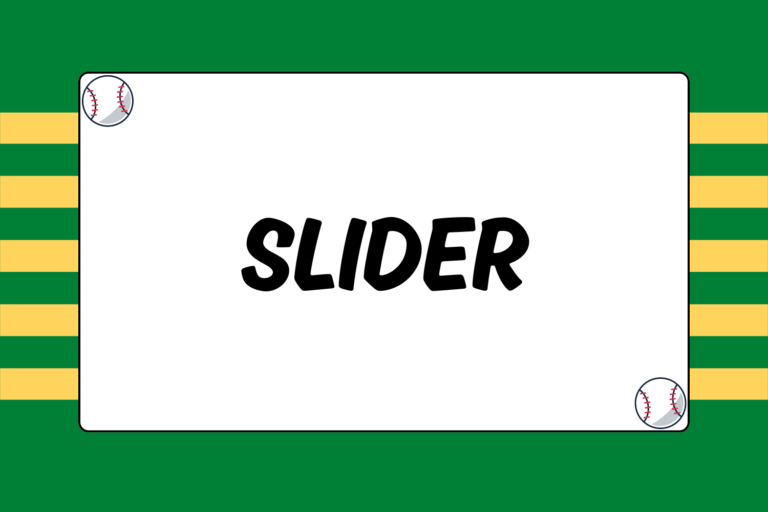Pitchers get a bad (though not totally undeserved) rap in baseball circles for being poor athletes and fielders. While some pitchers are excellent athletes, it’s true that many hurlers can get away with limited athleticism because they really only need to focus on one skill: Pitching. There are, however, a few common instances in which a bit of agility goes a long way. These types of plays include:
- Fielding bunts
- Covering first base on balls hit to the right side
- Starting a double play off a comebacker
- Pickoffs to second base
This guide focuses on the final item on this list. While pickoff plays to second base are rare, a well-timed pickoff of a runner in scoring position can mean the difference in a game. Read on for an explanation of the different types of pickoff plays, as well as tips for holding runners at second base.
Holding Runners at Second Base
With a runner on second base, most of the strategy and gamesmanship employed by the pitcher never shows up in a box score or directly results in an out. However, the ability to hold runners at second and still pitch effectively is extremely valuable.
Whereas runners at first base are usually alert for a pickoff attempt, runners at second are typically more focused on extending their lead so they can score on a hit. As a pitcher, your job is to keep the runner from getting a huge lead, dancing off the base, and building momentum towards third base as you pitch the ball.
The most effective way to hold runners is to be unpredictable. Good base runners try to find patterns in the pitcher’s motion, so they time a pitcher’s movements from the set position. Let’s say you come set, hold for one second, take a look at the runner, then turn towards the plate and pitch. This motion is fine, but the runner is going to notice if you repeat it every single pitch.
Vary how long you hold the ball before pitching, how long you look at the runner before turning towards the batter, and how many times you look at the runner before pitching. A runner is less likely to extend his lead if he can’t predict when you’ll pitch the ball.
Finally, a good way to keep runners on their toes at second base is to mix in an occasional pickoff throw.
Amazingly True Story
The 1948 Cleveland Indians won 97 games behind two future Hall of Famers: flame-throwing right-hander Bob Feller and American League MVP Lou Boudreau, who served as player/manager. In Game 1 of the ’48 World Series against the Boston Braves, with Boudreau at second base and Feller on the hill, the two teamed up for perhaps the most famous non-pickoff in baseball history.
In a scoreless tie in the eighth inning, Boston’s Phil Masi led off second base, apparently unafraid of the pickoff play the Indians had used time and time again during that season. Feller noticed Masi’s big lead. He came set, glanced at Masi, and then turned his head back towards home plate. At that moment, Boudreau dashed for second base, and Feller spun around and fired the ball right on target. It was perfect execution; Boudreau put the tag on Masi, beating him to the base by a foot.
The Cleveland faithful started cheering for a brief moment before second base umpire Bill Stewart — who later admitted his attention was not entirely on the play — threw his arms out to signal “safe.” Two batters later, Masi scored on a single and the Braves won 1-0. Despite their misfortune, the Indians went on to win the ’48 World Series in six games — the franchise’s last championship.
Second Base Pickoffs
Pickoff plays to second base are unique in that they require planning and coordination between the pitcher and the middle infielders. Unlike first basemen, middle infielders cannot hold a runner by standing directly on the bag. In general, they have to hold their positions, occasionally dancing towards the base to keep the runner close.
Pickoff plays to second base are almost always called beforehand (whether by the pitcher, infielders, catcher, or coach). And in order to actually have a chance to pick off a runner, the timing needs to be perfect. Specifically, the pitcher needs to make the pickoff throw at the same moment that the infielder gets to the base. Most pickoff plays to second base fall into one of two categories (which apply to both righties and lefties):
Wheel/Inside Move
The wheel/inside move rarely results in a pickoff because it takes too long to develop. Instead, it’s used more frequently to keep the offense honest. To execute it, the pitcher comes to the set position. He then raises his front leg as if he were going to pitch. Instead of driving forward and starting his throwing motion, the pitcher turns his hips and front leg inward towards second base. He spins around on his back foot and squares his shoulders to second base. The pitcher then lands on his front foot and makes the pickoff throw to second base. (This is not a balk because it qualifies as a step-and-throw to the base). There are two keys to executing this move:
- Balance: The motion requires you to turn 180 degrees on one leg, so it can be easy to lose your balance. Focus on keeping your knees bent and weight centered to avoid toppling over.
- Sell it as a pitch: Often, teams call for a wheel move in order to see if the opponents will tip off their play; a batter might square around to bunt or a runner might break towards third base. In order for this to work (and especially if you hope to pick off a runner with a wheel move), you need to make it look like you’re focused on the batter. Your initial leg kick should be indistinguishable from the start of your normal pitching motion. This is difficult to achieve and takes a great deal of practice.
Quick Pivot
Quick pivots are normally used when trying to get an out, and – as the name implies – it needs to be performed quickly. From the set position, the pitcher pivots his feet and turns his body away from second base (lefties turn towards third base, righties towards first base). He then spins his head, torso, hips, and legs around 180 degrees, picks up the target with his eyes, points his non-throwing shoulder towards second base, and makes a quick throw.
The key to this play is to get your head around to face second base as soon as possible so you can see your target and keep your weight balanced. Both techniques cut down on throwing errors, which happen frequently when pitchers rush their pickoffs. Quick picks to second base are always pre-designed, and are typically one of two types of plays:
- Timing pick: Every team runs their timing pick a bit differently, but the structure is the same. The pick is called, then the pitcher comes to the set and looks at the runner. Once he turns back towards home plate, the infielder covering the base waits a certain amount of time (maybe two seconds) and then breaks for second base. At the same moment, the pitcher pivots and makes the pickoff throw.
- Daylight pick: In this play, the shortstop decides when to run the pickoff. The pitcher comes to the set and looks at the runner. When he thinks they can pick off the runner, the shortstop breaks towards second base. Once he gets past the runner — and the pitcher can see “daylight” between the runner and the shortstop — the pitcher pivots and makes the throw.
Be an Athlete!
Part of the reason pickoffs at second base are rare is that they require a lot of practice. Pitchers must master not only the complicated movements of the different types of pickoffs; they also have to perfect their timing with the infielders. If you want to be a complete pitcher, put in the time and effort to learn both the wheel move and the quick pivot. You never know when you might get a chance to pick the winning run off second base — or better yet, prove to the world that pitchers are great athletes!





